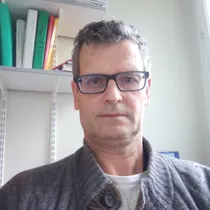- Accueil >
- Publications >
- Inhibition of DNA Repair by Inappropriate Activation of ATM, PARP, and DNA-PK with the Drug Agonist AsiDNA
Inhibition of DNA Repair by Inappropriate Activation of ATM, PARP, and DNA-PK with the Drug Agonist AsiDNA
Auteurs
Nathalie Berthault, Ptissam Bergam, Floriane Pereira, Pierre-Marie Girard, Marie Dutreix
Résumé
AsiDNA is a DNA repair inhibitor mimicking DNA double-strand breaks (DSB) that was designed to disorganize DSB repair pathways to sensitize tumors to DNA damaging therapies such as radiotherapy and chemotherapy. We used the property of AsiDNA of triggering artificial DNA damage signaling to examine the activation of DSB repair pathways and to study the main steps of inhibition of DNA repair foci after irradiation. We show that, upon AsiDNA cellular uptake, cytoplasmic ATM and PARP are rapidly activated (within one hour) even in the absence of irradiation. ATM activation by AsiDNA leads to its transient autophosphorylation and sequestration in the cytoplasm, preventing the formation of ATM nuclear foci on irradiation-induced damage. In contrast, the activation of PARP did not seem to alter its ability to form DNA repair foci, but prevented 53BP1 and XRCC4 recruitment at the damage sites. In the nucleus, AsiDNA is essentially associated with DNA-PK, which triggers its activation leading to phosphorylation of H2AX all over chromatin. This pan-nuclear phosphorylation of H2AX correlates with the massive inhibition, at damage sites induced by irradiation, of the recruitment of repair enzymes involved in DSB repair by homologous recombination and nonhomologous end joining. These results highlight the interest in a new generation of DNA repair inhibitors targeting DNA damage signaling.
Equipes

Membres

PIERRE-MARIE GIRARD
Chargé de recherche CNRS

